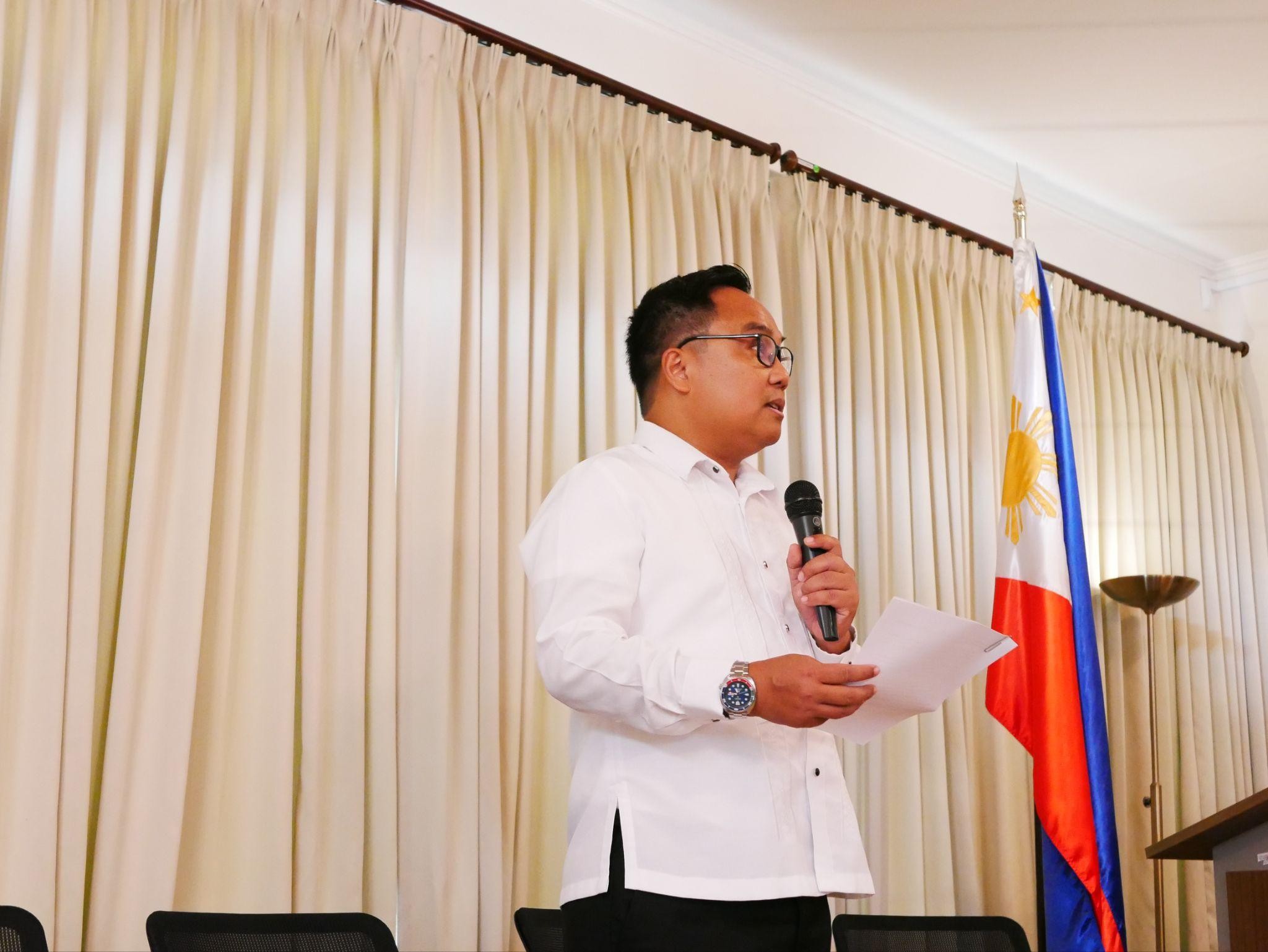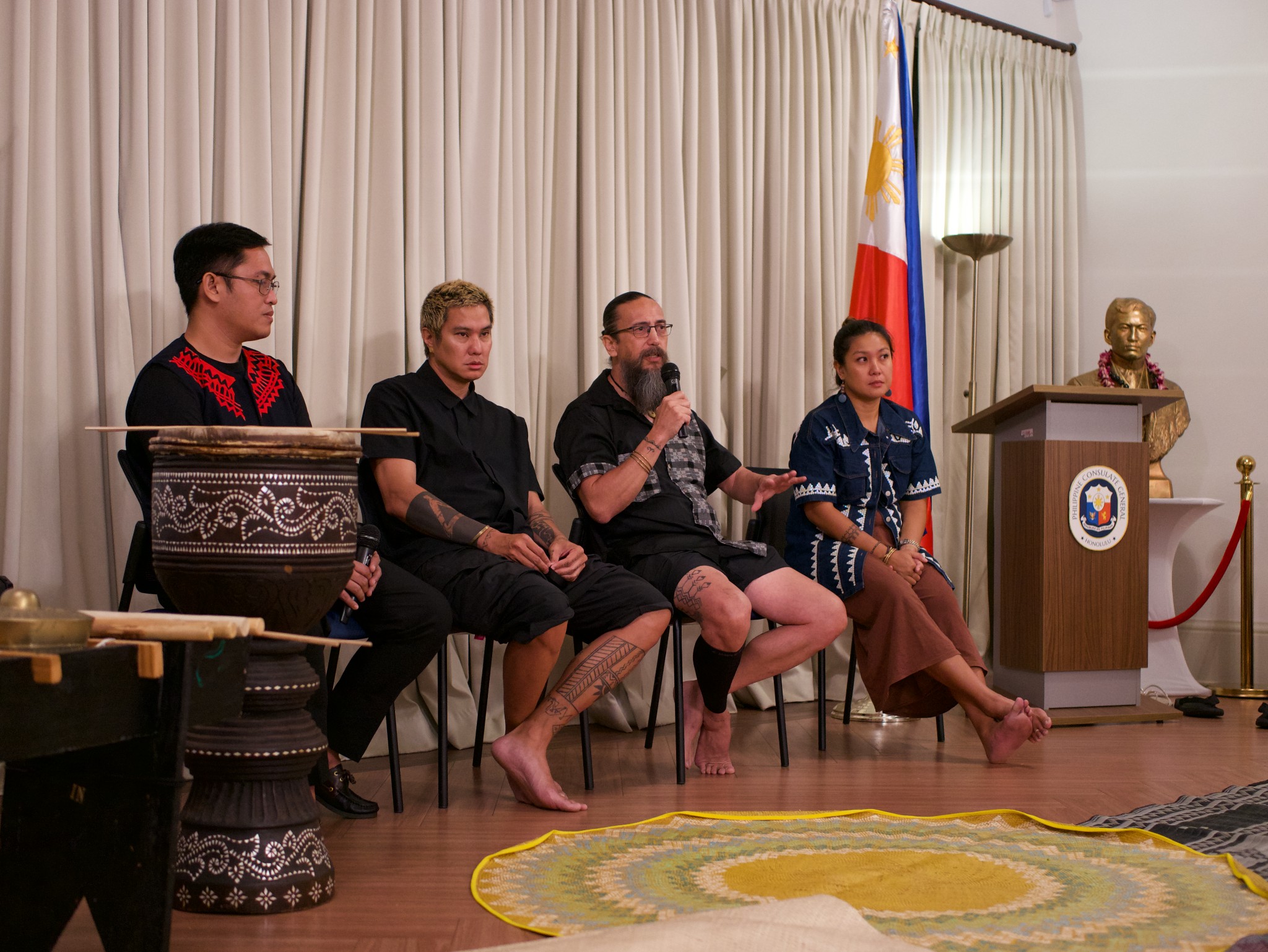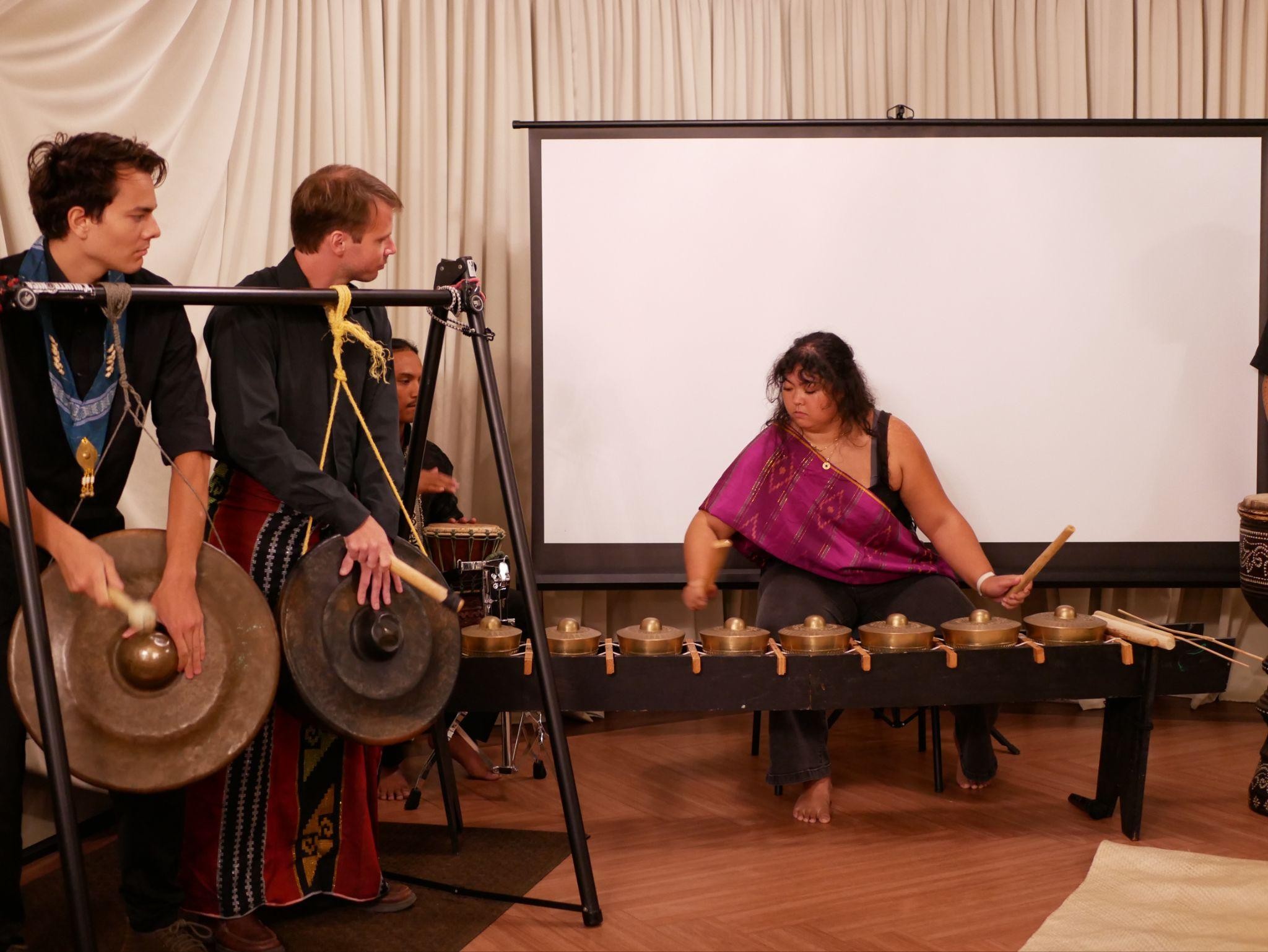The Modern Mambabatok Inks Kimat at “Markings of Legacy: Script, Skin, And Spirit” in Honolulu

Mambabatok Lane Wilcken, supported by his apprentices, hand taps “kimat” (lightning) during a batok demonstration at the Consulate.
HONOLULU 13 August 2025 — The Philippine Consulate General in Honolulu, together with the House of Gongs, presented Markings of Legacy: Script, Skin, and Spirit at the Consulate last 04 August 2025.
The event featured the Filipino ancestral practice of batok (hand-tap tattooing) and baybayin (pre-colonial script) through a discussion and demonstration from living culture bearers and tradition keepers from the Philippines and the Filipino American Diasporic community.
In his remarks, the Philippine Consul General in Honolulu Arman R. Talbo recognized that, prior to colonization, our predecessors in the Philippines recorded their identity, status, and achievements through batok. He added that, as we observe Buwan ng Wika and Buwan ng Kasaysayan this month, we honor the story of our ancestors, which they inscribed on their skin or other artifacts using a writing system they themselves developed.
During the program, practitioners of batok and baybayin shared their journey and research to ensure mindful and accurate representation of the indigenous groups from whom the craft originated. They also discussed the cultural and spiritual significance of the practice, which has been passed on to different generations.
House of Gongs Artist-in-Residence Pow Taton, shared the batong-batong tattoo practice in the Panay Bukidnon Indigenous cultural community and the symbolism of the patterns. Meanwhile, Kristian Kabuay narrated the story of his baybayin practice, how it helped him spark interest in Philippine culture and heritage, and its impact on his personal and community life.
Lastly, Lane Wilcken highlighted the difference between tattooing as an art form and tattooing as a cultural practice, with the former focusing on individualism and the latter rooted in community. He emphasized that batok is a ritual practice, rooted in the wisdom of our ancestors, who chose the design, meaning, and placement of the markings on the recipient’s skin.
House of Gongs co-founder Lydia Querian moderated a panel discussion with the practitioners, wherein they touched upon cultural integrity, valuation of the practice, and the importance of ensuring that our heritage is kept alive. The activity was made more meaningful through the musical presentations by Braddah Ash and the University of Hawai`i Kulintang Ensemble, led by House of Gongs co-founder Ron Querian.
The night ended with a live batok demonstration by Mr. Wilcken, supported by his apprentices. Prior to the actual inscription, they discussed the lineage of the recipient to determine the pattern that would best reflect his roots and role in the community. They then assisted him in offering “atang” and requesting guidance from his ancestors. A “kimat” (lightning) pattern was inked on the skin of the recipient, symbolizing the connection of the sky and the earth and paying homage to his lineage.
Information on similar programming may be found on the House of Gongs website: https://www.houseofgongs.com/. END

Consul General Talbo underscores the significance of batok and baybayin in recording the identity and history of the indigenous peoples of the Philippines.

Lydia Querian (rightmost) moderates the panel discussion with Pow Taton (leftmost), Kristian Kabuay (2nd from left), and Lane Wilcken (2nd from right).

UH Kulintang Ensemble performs at “Markings of Legacy.”
For more information, visit https://www.honolulupcg.dfa.gov.ph, https://www.facebook.com/PHinHonolulu/, https://twitter.com/PHinHonolulu or https://www.instagram.com/phinhonolulu/.

